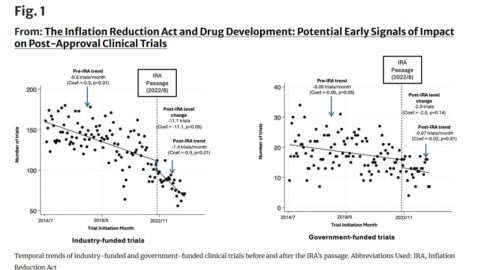Programming Note: Cost Curve is off tomorrow, back Monday.
If you’re looking to get a value fix, though, the Drug Channels webinar on 340B is tomorrow. The topic couldn’t be more timely, and I’ll be tuning in. You can get access here.
I like to make the point around here that insulin affordability is a (mostly) fixed problem in the United States. It didn’t happen all at once, and I’m sure there are still isolated pockets where a lack of programs or — more likely — a lack of information is leaving patients adrift. But, by and large, we’re in a good spot.
There is a lot of interest lately in how we got to this point and who deserves credit. STAT’s DC Diagnosis newsletter today has some perspective on whether Republicans deserve blame for scotching $35 insulin in the commercial market, building on the illuminating story from last week on how the whole $35 insulin idea came to pass in the first place.
But, last week, I had a reader point out that there was action even earlier. PBMs and Lilly worked to push out savings cards in 2017, and even though that effort looks fairly pedestrian by 2024 standards, it’s a reminder that there has been a long-term, concerted effort to find creative ways to work around the mechanics of the reimbursement system in the U.S. to deliver savings for patients.
It hasn’t always worked, or worked perfectly, or worked for all patients. But every effort moved the ball forward or taught us something.
But it’s something that I’m thinking about as other therapies — inhalers or gene therapies or obesity meds — supplant insulin in the public consciousness. Much like drug development, innovation in getting meds to patients doesn’t always happen via revolution, but rather by stacking small experiments on top of each other and seeing what works.
It’s not a very satisfying process for those who want to see change, like, yesterday. But the insulin example shows how powerful it can be over time.
I’m not sure what to make of this release from Express Scripts/Evernorth, which notes that the average patient OOP for members in employer plans fell by 1% to just over $15 a script last year.
To be clear, falling patient OOPs is a good thing, but the company gave very little data explaining what’s going on. More generic use? Lower negotiated prices? How does this compare to what Express Scripts is paying? Is that 1% coming out of pharmacists’ pockets?
It would be interesting to compare the selected numbers from the new release with the company’s overall drug trends, but that’s not possible: the company used to release broader numbers every year but stopped after 2021. That makes this kind of selective disclosure just a little more suspect than it would otherwise be.
Elsewhere:
340B Report says that the much-hyped Senate bill on 340B could be coming before the August recess. While that matches reporting from Axios earlier this month, this remains an I’ll-believe-it-when-I-see-it kind of thing.
By the time you read this, oral arguments in the Boehringer Ingelheim IRA case will have been heard in Connecticut. I didn’t listen in, but I’m assuming someone did, and I’ll flag any coverage on Monday.
Look, I’m not under any illusion that The Nation is an agenda-setting publication. But the fact that its publisher ran a full-throated endorsement of a European-style approach to pricing and reimbursement of obesity drugs is probably a good proxy for how a certain segment of the political spectrum thinks about these topics.
The FTC is in support of a USPTO proposal that would make more data about patent settlements available. Per reporting in Endpoints, industry thinks that’s an inelegant and potentially harmful route of disclosing what could/should be closely held info.
Real Endpoints has a LinkedIn post out making the case that the solution around obesity-related coverage is smart contracting. “We can get serious about outcomes-based approaches that only reimburse when there’s documented evidence that patients continue to lose weight on the meds. That’s going to require a coalition of willing manufacturers, payers, third-party aggregators, and maybe even government and financial institutions to make a reality.”
If you want to search Cost Curve back issues or link to anything you read here, the web links and archive are online at costcurve.beehiiv.com. You can subscribe there, too.




